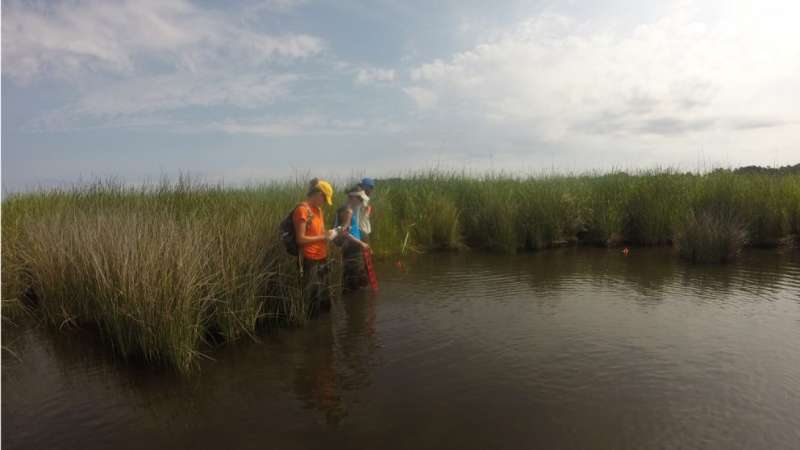Invasive and native marsh grasses may provide similar benefits to protected wetlands

An invasive species of marsh grass that spreads, kudzu-like, throughout North American wetlands, may provide similar benefits to protected wetlands as native marsh grasses. According to new research from North Carolina State University, the invasive marsh grass's effects on carbon storage, erosion prevention and plant diversity in protected wetlands are neutral. The findings could impact management strategies aimed at eradicating the invasive grass.
Phragmites australis, known as the common reed, is an invasive marsh grass that can spread at rates up to 15 feet per year. It thrives throughout North American wetlands, and studies have demonstrated that its densely packed growth pattern chokes out native marsh plants, thereby reducing plant diversity and habitat used by some threatened and endangered birds.
However, other studies have shown that Phragmites may help reduce shoreline erosion in marshlands and store carbon at faster rates than native grasses.
Since managing the threat is costly - in 2013, efforts to eradicate Phragmites cost about $4.5 million - Seth Theuerkauf, a Ph.D. candidate in marine, earth and atmospheric sciences at NC State, decided to look at how relative abundance of the marsh grass affected the ecosystem services that humans value from marshes, such as their ability to stabilize shorelines.
Theuerkauf and his colleagues looked at impacts of Phragmites on marshes in two protected reserves within the northeastern portion of the North Carolina Coastal Reserve system. In particular, they wanted to compare ecosystem services - plant diversity, shoreline stabilization and carbon storage - between marshes with varying amounts of Phragmites: those with only native grasses, those with a mix of grasses and those with only Phragmites.
The findings were encouraging. The team found no significant differences between ecosystem services of the marshes they studied, indicating that Phragmites' effect was largely neutral. However, Theuerkauf points out that the neutral effect could be due to the protected status of the wetlands they studied and the specific ecosystem services evaluated.
"Studies that associate Phragmites with negative impacts on wetlands are often conducted in areas that have seen significant human interventions, such as shoreline development or construction of drainage canals, whereas our study was conducted in undisturbed marsh habitat within a protected reserve system," Theuerkauf says.
"Our findings highlight the importance of maintaining protected reserves, as they may provide a strong defense against the negative impacts of invasive species and could reduce the time and money spent on trying to eradicate these species," adds Theuerkauf. "Additionally, our results suggest that Phragmites management efforts should also take ecosystem services into account."
More information: Seth J. Theuerkauf et al, Density-dependent role of an invasive marsh grass, Phragmites australis, on ecosystem service provision, PLOS ONE (2017). DOI: 10.1371/journal.pone.0173007
Journal information: PLoS ONE
Provided by North Carolina State University




















